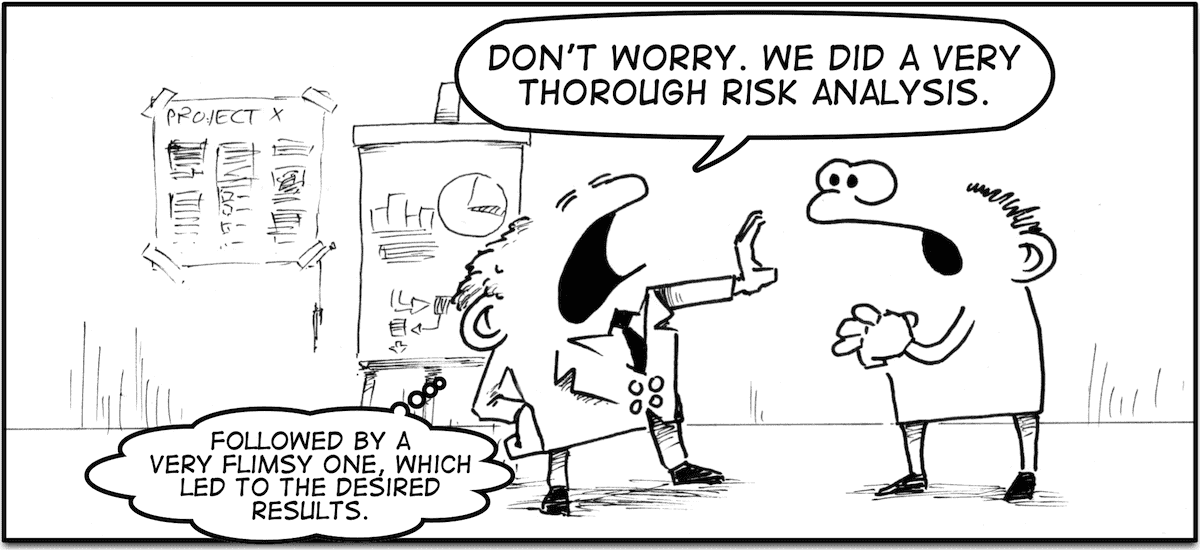A Different Perspective on the Boeing Board’s Challenges
Boeing’s Board finds itself in a predicament no Director ever wants to be in – facing a major lawsuit from shareholders for malfeasance and dereliction of duty – a shareholder derivative suit. Many Directors break a sweat just hearing these words.
A shareholder derivative suit is a lawsuit brought by a shareholder(s) on behalf of a corporation against a third party. In many cases, the third party is an insider of the corporation, such as an executive officer or director. Shareholder derivative suits are unique because under traditional corporate law, management is responsible for bringing and defending the corporation against suit. Shareholder derivative suits permit a shareholder to initiate a suit when management has failed to do so. These types of suits are known for their lengthy proceedings and for becoming quite messy. Following two fatal crashes that killed 346 people in 2018 and 2019, a U.S. judge has ruled that the Boeing Board has liability, subsequently ushering in the ability for shareholders to take action in this manner due to their financial losses. The named Board Members in the suit will likely not only be those who continue to serve on the Board and were in place during these deadly accidents, but also those Board Members who have since left the Board, but were serving during the time in question.
Although the Delaware ruling on September 7th, 2021 by Vice Chancellor Morgan Zurn noted the real victims of the crashes were the deceased and their loved ones, the ruling additionally, and rightfully so, stated “corporate law recognizes another set of victims: Boeing as an enterprise, and its stock-holders.” This considerable ruling stated that “the Board should have heeded but instead ignored” a red flag relating to the aircrafts’ safety systems (known as MCAS) following the first crash in 2018 and that the “stockholders may pursue the Company’s oversight claim against the Board.”
Boeing has already paid large fines in an effort to settle their malfeasance:
- In early 2021, Boeing agreed to pay $2.5 billion in fines to settle a criminal charge of defrauding regulators overseeing the 737 MAX aircraft.
- In May 2021, Boeing additionally agreed to pay a $17 million fine and commit to improving its supply chain and production practices following the discovery that Boeing had installed unapproved equipment on a significant number of its aircraft.
Now, a shareholder derivative suit opens the door for additional, and potentially very costly, payouts for the company and/or their Directors’ & Officers’ (D&O) insurance carrier. (see the article ‘Do You Do The D&O’ for more details on Board Director indemnification, D&O insurance, and Independent Director Liability (IDL) insurance)
Much of what I have mentioned is well known already in Board Director circles in a relatively short amount of time… however, is there more to the story? It looks that way. I was obsessively curious to know how the Board was structured leading up to this predicament where Boeing is today – specifically, how the Board’s risk oversight was structured along with its ties to proactive governance oversight. In researching how this risk / governance oversight was handled as it relates to Boeing’s Board Architecture, some interesting observations and practices were noted…
An organization’s yearly proxy statement is a great window into the organization, however, reviewing the last 10 years of an organization’s proxy statements can show important longer-term trending. Over the past few weeks, I have read through and compared the last 10 years of Boeing’s proxy statements presented at each of their yearly Annual Meeting of Shareholders. Of particular interest to me was to investigate any changes to the structure of Boeing’s Board of Directors in 2017 through 2021 – specifically, their Board Committees. Were there any changes or enhancements following a major risk-related incident? In addition to people changes (Board Members, CEO, etc.), was there anything notable or indicative of how the Board’s operations would be handled going forward? What did the Board think went wrong and how would they lessen or eliminate the chances of this happening again in the future? Something interesting can definitely be seen in the 10 year review and comparison. The 2019 proxy statement lists the in-place and operational Board Committees serving the organization throughout 2018 – up to and including the first 737 MAX crash in October 2018. These standing Board Committees included the:
- Audit Committee
- Compensation Committee
- Finance Committee
- Governance, Organization and Nominating Committee
- Special Programs Committee (for classified U.S. government programs)
In all honesty, I was looking for a dedicated Risk Committee. What I instead found was risk oversight components spread throughout each of the Board Committees. Boeing’s 2019 proxy statement, and many before it, have a specific ‘Risk Oversight’ outline in the Corporate Governance section. Essentially, the entire Board was responsible for risk (which I agree with), but risk oversight didn’t have a ‘home.’ Although this is not as rare as I would personally like it to be, it is not the first time that a Board with a decentralized risk oversight model has sown the seeds of future challenges – some of which seem quite obvious to immediately address (i.e. deep safety and risk evaluations, possibly immediate aircraft groundings, directly following the first 737 MAX aircraft crash in October 2018). Boeing’s 2019 proxy statement, within the Risk Oversight section, goes on to state,
“The Board is responsible for overseeing management in the execution of its risk management responsibilities and for assessing the Company’s approach to risk management. The Board regularly assesses significant risks to the Company in the course of reviews of corporate strategy and the development of our long-range business plan, including significant new development programs. As part of its responsibilities, the Board and its standing committees also regularly review strategic, operational, financial, compensation, and compliance risks with senior management. Examples of risk oversight activities conducted by the Board’s committees, subject to committee report-outs and full discussion at the Board level, are set forth below.”
This section goes on to list specific aligned risk duties of each specific Board Committee. Again, this is fine in an attempt to have all Board Members involved and owning the organization’s risks, but where is the overall process, measurement, follow up, and outcome owned? It is the integrated, not siloed, view where major risks commonly dwell.
Shockingly, the Boeing Board kept this same committee structure in place through early 2019, up to and including the second 737 MAX crash in March 2019, as seen in its 2020 proxy statement, which defined the in-place structure of the 2019 Board.

This same 2020 proxy statement shows in the month following the second 737 MAX crash (April 2019), the Boeing Board finally instituted a temporary Committee on Airplane Policies and Processes, holding four formal meetings and more than a dozen informal meetings leading up to the committee’s “dissolution in August 2019, at which time it was replaced with the permanent Aerospace Safety Committee.”
It is important to note that per the description of the permanent Aerospace Safety Committee in the 2020 proxy statement, this is indeed a formal Risk Committee operating under a different name.
Taken directly from the 2020 proxy statement, “The Aerospace Safety Committee, established by the Board in 2019, is responsible for directly overseeing our engineering, design, development, manufacture, production, operations, maintenance, and delivery of aerospace products and services, in order to ensure the safety of our commercial, defense, space, and other aerospace products and services.
- In order to fulfill this responsibility, the Aerospace Safety Committee provides direct oversight over:our safety-related policies and processes;
- certification activities;
- our policies and processes for engaging with and supporting the regulatory oversight of the Federal Aviation Administration, the Department of Defense, the National Aeronautics and Space Administration, and non-U.S. commercial, defense, and space aviation safety regulators;
- our participation in and support of accident investigations conducted by the National Transportation Safety Board and other domestic and international investigatory authorities, including our responses to material findings and conclusions of such investigations;
- our pilot training programs and services; and
- cybersecurity with respect to our aerospace products.
In addition, the Aerospace Safety Committee consults with the Compensation Committee in connection with the safety review portion of executive individual performance evaluations. The Aerospace Safety Committee is composed entirely of directors who satisfy NYSE director independence standards and our Director Independence Standards.” This newly added and integrated risk funnel, now having a formal ‘home’ as a Board Committee (centralized risk oversight), while simultaneously leveraging Boeing’s existing risk oversight approach (previously defined as decentralized risk oversight in this article), should together serve this Board very well into the future.
“The presence of a Board Risk Committee at organizations with any degree of strategic complexity is rapidly becoming a fiduciary expectation,” states David R. Koenig, President and CEO of the DCRO Institute, a global educational nonprofit dedicated to bringing risk expertise to the boardroom & c-suite. “It is a fundamental duty of care for Board Members to ensure their organizations have a risk infrastructure, including a dedicated Risk Committee, commensurate to the complexity of the organization, its markets, and customers, and qualified risk Directors to serve on that committee.” Boards should heed this profound advice.
Numerous other articles on the Boeing story have focused solely on the symptoms and outcome of their challenges, seemingly avoiding the true cause. At this point in my career, I firmly believe a large percentage of Board failures reside in two hidden areas:
- Cloaked strategy issues and failures believed to be governance shortcomings, or the lacking interrelationship and understanding of strategy & governance as it relates to the Board.
- Board Architecture (structure) shortcomings unknowingly forcing risk scenarios to grow exponentially in time and magnitude.
The moral of this story: as either an aspiring or experienced Director, look deeply at how the Board’s risk oversight components are structured. More specifically, is there a centralized model of risk ownership (Board Committee) acting as a ‘home’ with an additional component of stand-alone (decentralized) risk inputs that incorporates the individual Board Members as well as all Board Committees? This simple check may just be the way to avoid becoming an overnight expert in your organization’s indemnification clauses, D&O insurance policy, Independent Director Liability (IDL) policy, and the complicated as well as scary world of D&O exclusions …or worse yet, your potential personal liability as a Director.
The article was first published here.
Photo by Inspirationfeed on Unsplash.

 5.0
5.0 




















